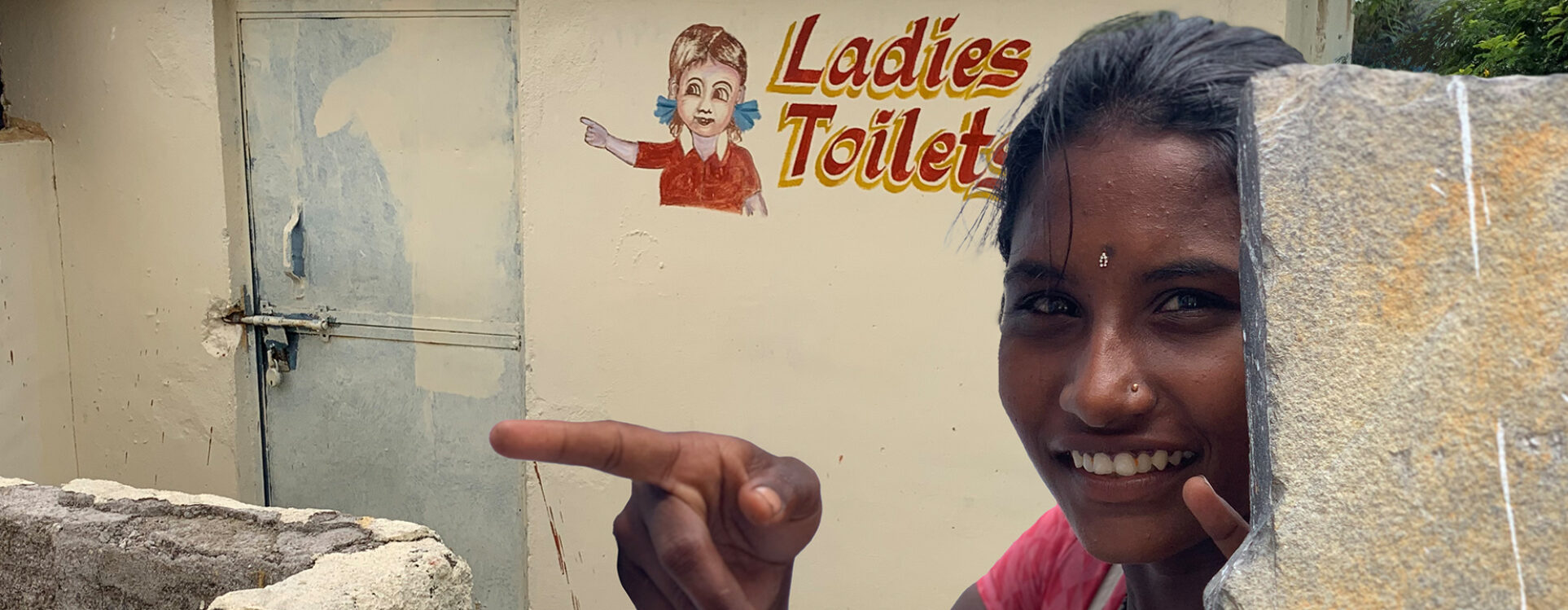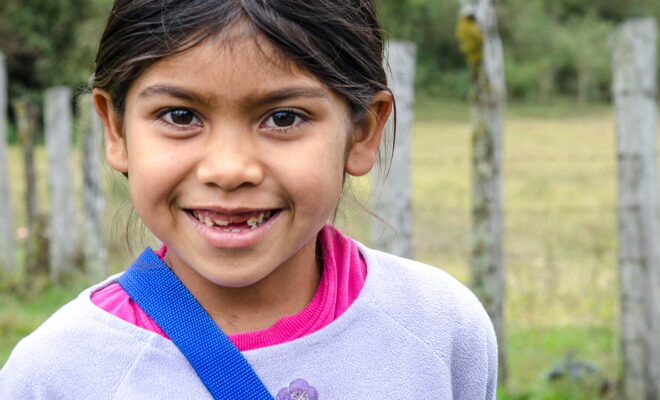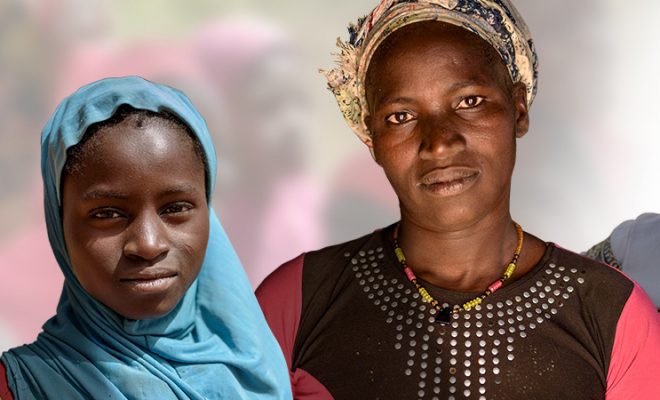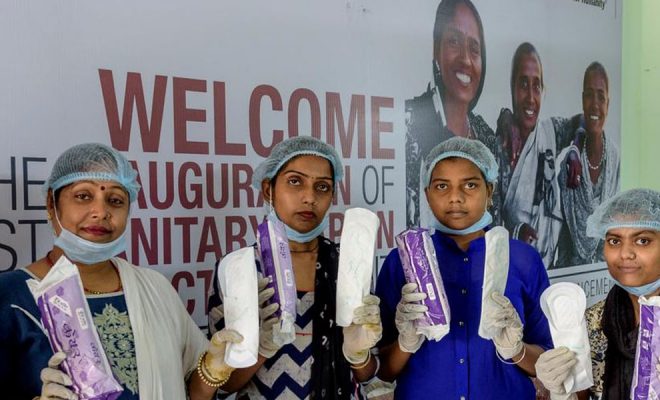“When they had their period, many girls did not attend school regularly due to the lack of proper facilities. Now they come with confidence and motivation. With the new girls’ toilets and the menstrual hygiene management lab, they no longer miss classes and appear less tense and happier. We [teachers] are now more confident about their academic performance.” —Geja Lakshmi, teacher at Ranipet Higher Secondary School.
Her testimony reflects a change that goes beyond peace of mind in the classroom: the full inclusion of menstrual hygiene in the school curriculum has led to a sharp drop in absenteeism among girls, the normalisation of menstruation among all students—and most importantly—within their families.
Improvements in the health of adolescent girls are also evident. “With the new handwashing stations and the training we received in the menstrual hygiene management lab, we’ve learned to take better care of ourselves,” explains one student. The drop in vaginal infections among girls confirms the effectiveness of menstrual education, which breaks down cultural taboos and combats harmful habits rooted in silence and social stigma.
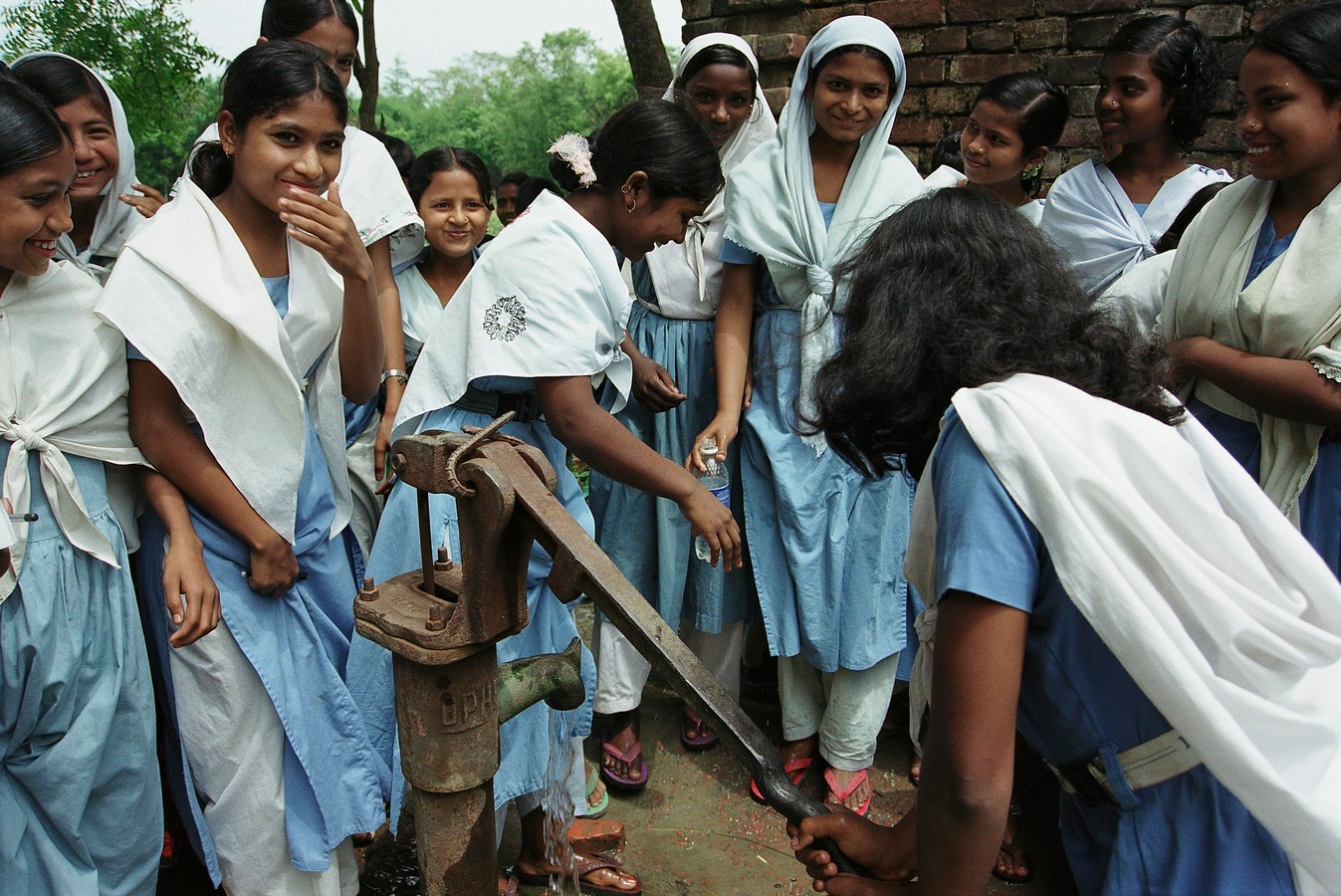
In our most recent projects, we continue moving towards a truly comprehensive approach to school sanitation. ©Scott Wallace / World Bank
At the Heart of Change: Menstrual Hygiene Management Labs
What teenage girl would go to school with blood-stained hands or uniform? Shame and anxiety are reason enough to stay home.
Menstrual Hygiene Management Labs (MHM) are a key solution to this serious issue in schools located in areas where hygiene is chronically neglected and strong taboos persist. These spaces have become hubs of educational, health, and cultural transformation.
Beyond gender-segregated latrines, MHM labs offer privacy, access to sanitary products, water, soap, incinerators for the safe disposal of used pads, and designated areas for washing and drying undergarments. They are safe spaces where girls learn and are freed from shame, and where the entire school community is educated on menstrual health. Students also receive information about the physiology of the menstrual cycle, its variations, and potential health issues.
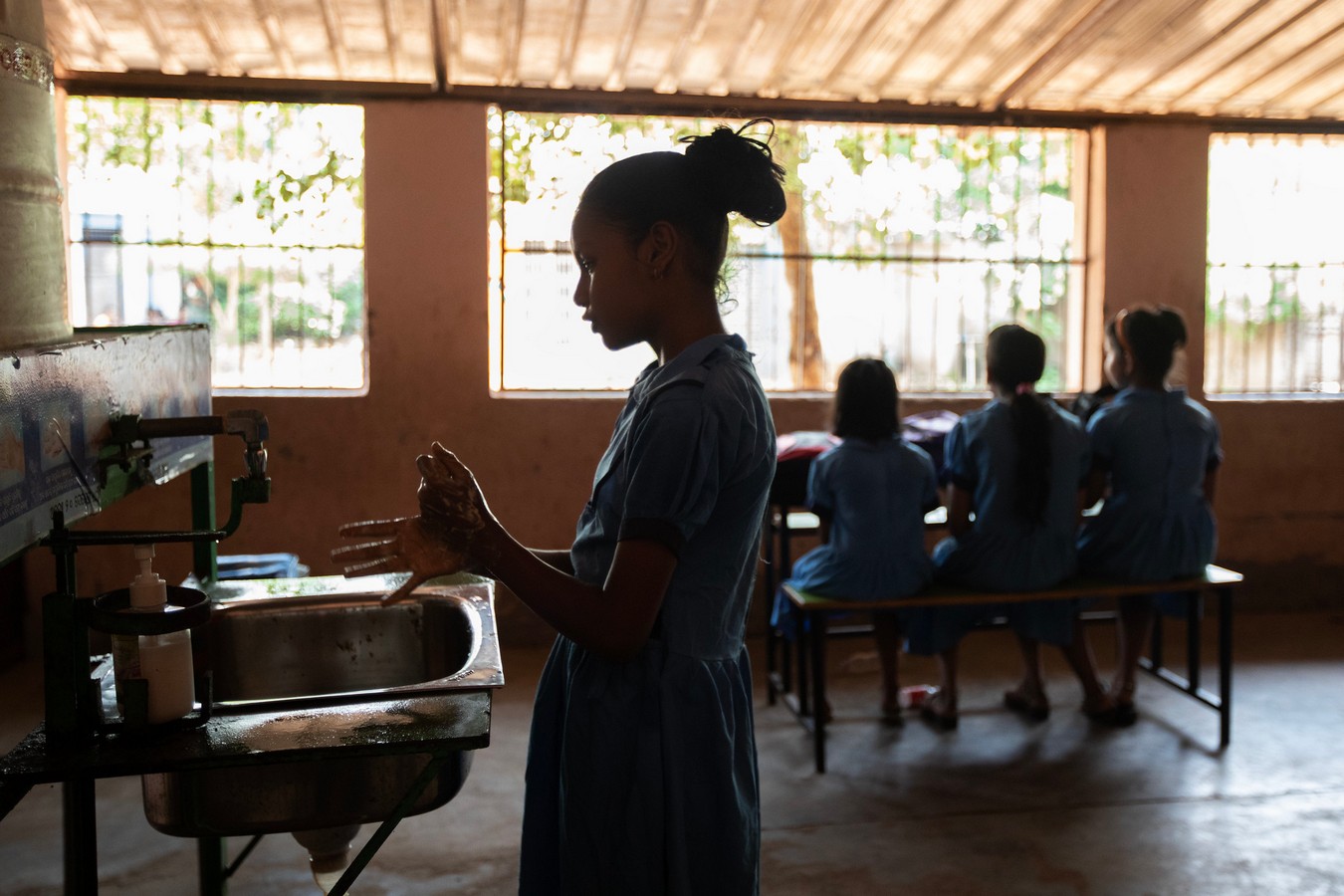
Beyond gender-segregated latrines, MHM labs offer privacy, access to sanitary products, water, soap, incinerators for the safe disposal of used pads, and designated areas for washing and drying undergarments. © Water for Women
The true structural change these labs generate comes from integrating this education into the school curriculum, which fosters a deep shift in the educational approach. In this sense, training boys is essential to ensure that the progress made with their female classmates continues into the future.
It is also vital for mothers and teaching staff to access scientific and health information to help shift cultural norms. The stigma doesn’t only affect adolescents. Mothers are also indirect beneficiaries of these projects. When they see their daughters receiving accurate information and proper care at school, they begin to question their own beliefs and replicate the new practices at home, multiplying the impact.
The project we implemented with UNICEF in four schools in Malawi is a model example. It embodies all these elements and addresses a critical issue identified during the diagnostic phase: access to menstrual hygiene products, whose shortage is endemic in remote rural areas, is boosted as awareness and demand increase.
We continue developing this concept. This past year, we completed the implementation of MHM labs in schools in Sriperumbudur and Ranipet, India, confirming their positive impact and establishing a replicable model we plan to expand.
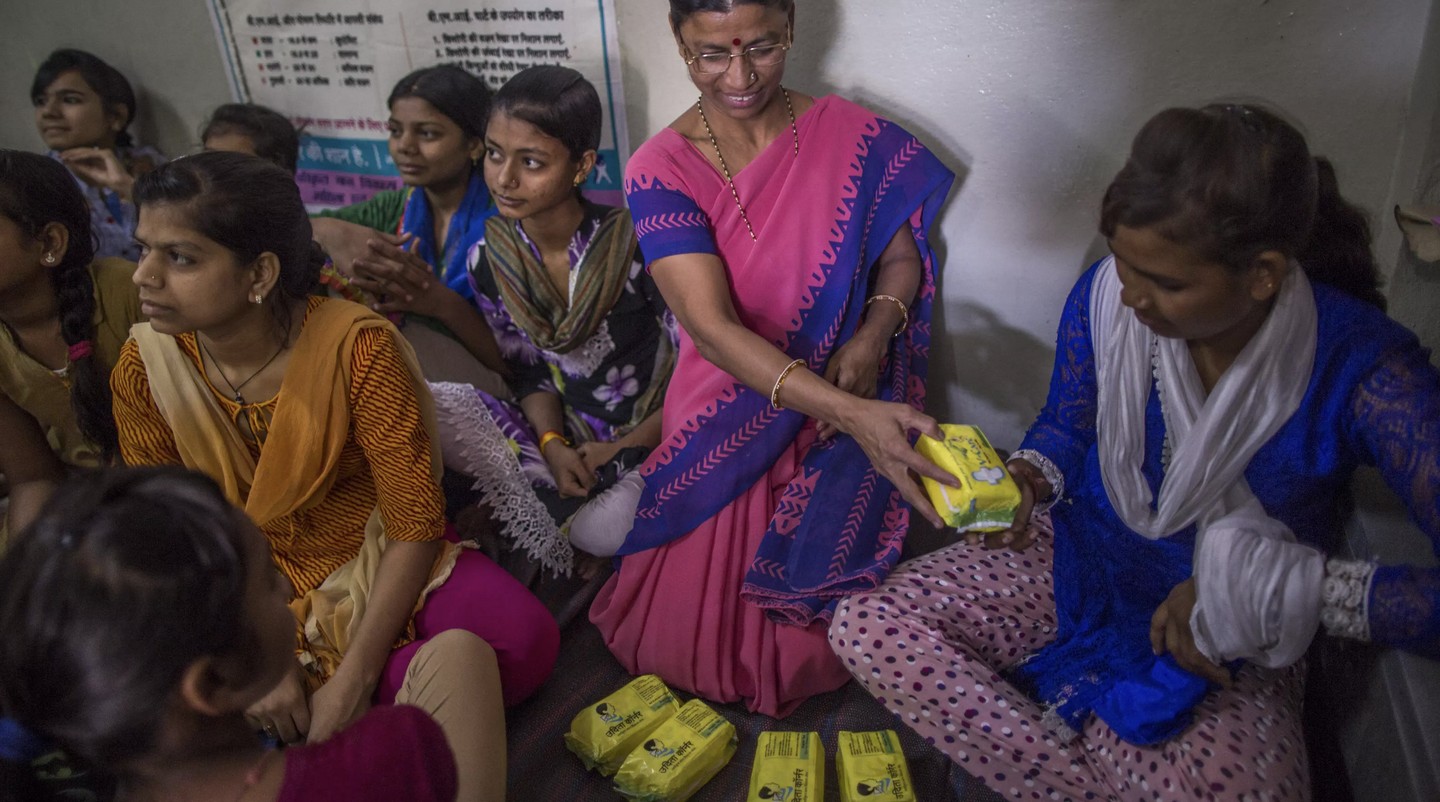
Menstrual Hygiene Management Labs (MHM) are a key solution to this serious issue in schools located in areas where hygiene is chronically neglected and strong taboos persist. These spaces have become hubs of educational, health, and cultural transformation.© WaterAid / Prashanth Vishwanathan
Beyond Infrastructure: Reducing the Education Gap
The results are measurable. In countries like Ethiopia or Tanzania, studies show that more than 50% of school-age girls miss between one and four days of class per month due to menstruation. After the implementation of comprehensive sanitation programs, absenteeism dropped significantly.
Moreover, access to menstrual hygiene products and facilities is linked to a marked reduction in urinary and vaginal infections. A study in Malawi showed that improvements in hygiene and menstrual education reduced the prevalence of infections among adolescent girls and concluded that including boys and teachers in health workshops was key to eliminating stigma and discriminatory practices.
Because taboos still persist. In some rural areas of India and Africa, people still believe menstrual blood contaminates crops, attracts disease, or can be used for witchcraft. Girls are often excluded from family activities, temples, or kitchens during their periods. Even worse, many face teasing or bullying and experience menstruation as something shameful that must be hidden.

The results are measurable. In countries like Ethiopia or Tanzania, studies show that more than 50% of school-age girls miss between one and four days of class per month due to menstruation. © pexels-kenechukwu-emmanuel
A Three-Pronged Strategy: MHM, SMC, and IEC
Sustaining this new culture of school hygiene requires the integration of three complementary pillars:
- MHM labs with proper facilities, privacy, and access to products.
- School Management Committees (SMCs) and Child Cabinets are key actors in maintaining infrastructure and promoting behaviour change among students.
- Information, Education, and Communication (IEC) content and campaigns, with relevant and culturally adapted educational messages that are integrated into both school activities and the broader community.
This systemic approach ensures that menstrual hygiene management is not just an isolated intervention, but a comprehensive, structural, and cultural transformation.
The Future of Rural Schools Starts Here
Our experience confirms it: menstrual hygiene management is a central pillar in schools. In 15 years of work, we have developed 33 school sanitation and hygiene projects in 15 countries, with over 97,000 direct beneficiaries—students and teachers—and 112,562 indirect beneficiaries, mainly students’ families who adopt new habits thanks to the school’s multiplier effect.
The impact goes far beyond infrastructure. Where there was once silence, there is now knowledge. Where there was shame, now there is confidence. Menstruation can—and must—cease to be a barrier to education.

The impact goes far beyond infrastructure. Where there was once silence, there is now knowledge. © Marni Sommer


